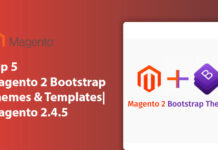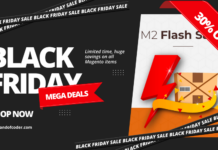
Creating a successful e-commerce site involves more than idea-brainstorming best products or lower prices. Your site’s aesthetics, organization, and navigation will either make or break the customer-buying process. Excellent site design builds confidence, is easy to use, and invites customers to convert every necessary conversion driver. Consumers have endless choices, so even small mistakes may drive them away. These website design tips will guide you in turning occasional visitors into constant customers and ensuring consistent business.
Table of Contents
8+ website design tips for your store this year
Among hundred of ‘expert tips’ for website design, you may don’t know exactly what you should do to build a conversion-focused online store. Without further ado, let’s deep dive into the best tips to design your own high-converting ecommerce website with ease. Check it out!
1. Prioritize Mobile Responsiveness
More individuals are shopping using their phones, and as a result, mobile responsiveness is a core part of e-commerce site development. No matter if they are on a desktop, tablet, or phone, your store has to look and function properly, giving them one seamless experience.
A responsive design not only serves to improve the user experience but also improves your search engine ranking. Google favors mobile-friendly pages and ranks them higher, which could bring traffic and offer better visibility. Ensure your design adapts automatically, your images load quickly, and navigation is simple on every device.
Mobile-friendly testing and A/B testing various mobile designs will help to identify the most resonating with your audience. To further improve usability, remember mobile-specific user activities like thumb-friendly button placement and vertical scrolling tendencies.
2. Simplify Navigation

Users can be overwhelmed by complicated menus or disorganized designs, which drives up bounce rates. Group comparable items, reduce the primary categories, and use straightforward, succinct labels that reflect what shoppers are probably looking for.
Think about adding sticky menus, breadcrumb navigation, or an auto-suggest search bar to further improve usability. Every goal is to lower friction so guests can browse, search through collections, and finish their transactions hassle-free.
Good navigation also calls for familiar iconography and regular menu positioning. By knowing where they are on your site and how to get back or go forward without misunderstanding, shoppers should always feel directed and in control. A proper navigation layout not only improves usability but also fosters more time on the website and greater conversion potential.
3. Use High-Quality Product Images and Videos
In e-commerce, graphics define everything. Since shoppers cannot physically handle or try your items, they depend greatly on pictures and videos to guide their purchases. Invest in high-resolution images highlighting features with zoom-in features and showcase your product from several perspectives.
Product videos that show products in use or highlight features in action can help build confidence and engagement. In addition to lowering return rates, they develop trust and credibility with prospective consumers, increasing their likelihood of conversion.
With visual content, consistency is everything. To keep quality and consistent appearance, utilize all product photos with the same background, illumination, and angles. Think about adding lifestyle photos to show your items in context, which will enable consumers to imagine how the product fits into their daily lives.
4. Ensure Security and Trust Signals are Visible

Visitors who have doubts about the security of your website are not likely to finish a transaction. Including clear trust signals such as SSL certificates, safe payment icons, and privacy policies can help users feel reassured and increase credibility.
Ensure the design firm you choose stresses security best practices and includes required safety precautions. When engaging web design professionals from Bizango, consult about every security aspect, from encrypted checkout procedures to data encryption. An experienced design team will help you make your site industry-standard compliant, thus creating a secure e-commerce experience.
Third-party certifications or badges of well-known security vendors can also be showcased to build customer trust. Offering some guarantees on payment and checkout pages minimizes cart abandonment and provides reassurance for users when using sensitive data.
5. Optimize Page Loading Speed

User experience and conversion rates both depend on page speed. Potential clients are probably to leave your site before it loads more than a few seconds and see your items. Retaining visitors and increasing your bottom line depends on maximizing the load time of your website.
To speed up loading, compress pictures, implement browser caching, and limit the heavy use of the script. Performance problems can be found using Google PageSpeed Insights or GTmetrix, and recommendations can be made on maximizing them.
Websites that load slowly also lower your overall consumer satisfaction and search engine rating. Regularly check your site performance, particularly following the addition of new features or content, and work with your hosting company to make sure you’re using a high-performance server design.
6. Highlight Customer Reviews and Testimonials
Online consumers are strongly motivated by social proof. Seeing others buy and enjoy your products helps new customers feel sure about their purchase choice. Show reviews and comments front and center on the product pages and all around your website.
You might also incorporate star ratings, user-created photographs, or thorough comments to make your material more genuine and approachable. Offer incentives or follow up with a post-purchase email campaign to motivate happy consumers to write reviews.
It also helps guests sort and filter reviews according to recency, rating, or relevance. This point of entry fosters trust and enables potential clients to find reviews that matter most to them, thus persuading them to buy.
7. Create a Specific and Convincing Call-to-Action
Your call-to-action (CTA) is the final step visitors must take to make a purchase. It could be “Buy Now,” “Add to Cart,” or “Checkout,” but your CTA should be clear, compelling, and in the perfect place. Include CTAs in prominent spaces with bold font, contrasting hues, and center-stage positions.
Ensure every CTA fits the user’s path and the particular page they are on. A category page might suggest shoppers “Shop the Collection.” Still, a product page should feature an “Add to Cart” button; reliable and forceful CTAs direct users toward conversion devoid of uncertainty.
With A/B testing tools, remember to experiment with several CTA placements, hues, and wording. Sometimes, even little tweaks can significantly affect the conversion rate.
8. Streamline for Simple Checkout

A slow or lengthy checkout process is one of the largest conversion killers on ecommerce. Keep the number of steps to purchase as low as possible and avoid asking unnecessary questions. Consider using guest checkout choices and auto-fill features to make the process as frictionless as possible.
Clearly show shipping costs, delivery times, and return policies upfront; add a progress indicator so users know where they are. A simplified checkout experience will significantly increase conversion rates and customer happiness.
Endnote
Good website design is a powerful ecommerce success component. You can create a buying experience that not only attracts individuals but converts them into loyal customers by prioritizing mobile responsiveness, navigation, graphics, speed, trust, and usability. Redesigning an existing store or opening up a new one, implementing these eight design principles will put you on the path to higher conversions and long-term revenue expansion.












![[SALE OFF] Discount 30% All Premium Extensions On Christmas And New Year 2025 christmas-and-new-year-2025](https://landofcoder.b-cdn.net/wp-content/uploads/2024/12/christmas-and-new-year-2025-1-218x150.png)






